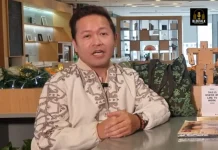
Just a month after the successful Sublian Festival in July, I found myself back in Batangas City—this time, for their much-anticipated folk dance competitions.
It was a short trip, just an overnight stay, yet a meaningful one for someone like me who holds heritage, culture, and the arts close to heart.
I witnessed the opening day of their two-day Pasikatan sa Buwan ng Wika, a citywide competition featuring various forms of performing arts such as duets (Paligsahan sa Pag-awit ng mga Awiting Likhang Pilipino), folk dance (Patimpalak sa Katutubong Sayaw), speech choir (Pasiklaban sa Sabayang Pagbigkas), and modern dance (Pakitang Gilas sa Makabagong Sayaw)—all in celebration of this year’s National Language Month. Day 1, August 30, was dedicated to the duet and folk dance competitions.
Organized by the Cultural Office of Batangas City, the program aims to preserve local heritage and instill in younger generations of Batangueños an appreciation of how colorful and rich their history and culture truly are.
I watched the folk dance competition, and this feature celebrates the young Batangueños and their trainers who, perhaps unconsciously, keep tradition alive while safeguarding these treasured pieces of heritage.
And why not? Filipino folk dances are special because they beautifully reflect the country’s rich cultural heritage. They are products of indigenous traditions blended with foreign influences accumulated over centuries of history.
Each dance tells a story—whether about nature, daily life, courtship, or epic legends—while showcasing the identity, artistry, creativity, and resilience of our people.
Also, kudos to Batangas City, one of the local government units actively championing the preservation of its cultural heritage, including folk dances.
Each year, the organizers ensure that competing groups from the elementary, secondary, tertiary, and community divisions perform only native dances that originated from their own province. This is not meant to create exclusivity, but to preserve what they can truly call their own.
In the elementary division, the teams brought to life Jota Batangueña, a lively courtship dance with Spanish influences that originated in Batangas—so much so that it proudly carries the name of the province.
Here are the winners of the elementary division of the Patimpalak sa Katutubong Sayaw:
- Champion – Batangas City East Elementary School
- 2nd Place – Sta. Teresa College
- 3rd Place – Bagong Silang Elementary School
Watch an excerpt from the winning performance by dancers from Batangas City East Elementary School here:
In the high school division, teams performed Polka sa Nayon, a playful social dance from Batangas dating back to the Spanish colonial period, traditionally showcased during fiestas and other community gatherings.
For the secondary division, here are the results of the Patimpalak sa Katutubong Sayaw:
- Champion – Marian Learning Center and Science High School
- 2nd Place – University of Batangas
- 3rd Place – Casa Del Bambino Emmanuel Montessori
Watch the winning performance of Marian Learning Center and Science High School dancers here:
Finally, participants of the college and community division showcased the Komintang, another courtship dance from Batangas, renowned for its elegant circular wrist movements.
And here are the winners of the college and community division:
- Champion – BSU Diwayanis Dance Theater
- 2nd Place – Binhing Sining Dance Company
- 3rd Place – Colegio ng Lungsod ng Batangas
Watch the winning performance of Diwayanis Dance Theater of Batangas State University here:
Hats off to the students for actively engaging in cultural activities despite the many distractions of today. Huge thanks to this program. Commendable, too, are the participating schools, trainers, choreographers, and cultural workers for rising to the challenge of preserving their province’s native dances through the recent competitions.
We all know this is no easy feat, as it requires countless hours of training, rehearsals, workshops, costume-making, fittings, and all the meticulous processes—not to mention the sacrifices behind each group’s performance.
Staging a folk dance is no easy task, as it requires not only creativity but also thorough research, discipline, and cultural sensitivity. Every costume, movement, and musical arrangement must stay faithful to tradition while still engaging the audience. It takes dedication to preserve authenticity and honor the cultural roots of the dance, making each performance not just entertainment, but a true celebration of heritage.
Moreover, the rise of foreign pop culture often overshadows traditional practices, leaving our folk dances at risk of fading from public awareness. This is why it is important to continue strengthening culture- and heritage-related programs, particularly those that focus on folk dances.
Today, these competitions are more than just friendly contests—they are part of a larger effort to safeguard our cultural identity.
Because, unlike paintings and sculptures that can be preserved in museums, books and literary works that can be stored in archives and libraries, or films that can now be digitized, our folk dances face a unique and ongoing challenge.
As an intangible form of art, folk dances cannot be stored in museums or replayed like recordings. Yes, they can be documented in books, much like recipes for heirloom meals. Yet, just as a written recipe cannot fully capture the aroma, flavor, and emotion of a dish, documentation alone cannot preserve a dance’s rhythm, energy, or communal spirit.
Written records are invaluable, thanks to our researchers, pioneers, and national artists—they serve as essential guides. Yet dances also need our active efforts, as they rely heavily on face-to-face training, word-of-mouth instructions, and live performance to survive. Without proper documentation, consistent practice, and strong cultural support, many traditional dances risk being altered over time, overly commercialized, or, worst of all, forgotten.
By safeguarding our folk dances today, we ensure that future generations can continue to move with the rhythm of our culture and the collective soul of our people.
Aside from that, these dances help drive the local economy by energizing festivals, giving life to our festivals, and attracting both foreign and local visitors—and I’d like to think that includes me.
They also instill discipline in students and dancers, promote physical health while enhancing confidence, teamwork, and creativity. They strengthen community bonds, fostering unity and pride within towns, schools, and provinces.
More than just a platform for artistic expression or supporting local industries through costumes and props, folk dances keep the stories, values, and traditions of communities alive. After all, they are living expressions of our history and identity.
And from what I’ve seen again after the Sublian Festival last July, Batangas City is doing its best with proactive efforts to preserve its heritage. We hope this continues. Now, we can safely and proudly say: Batangueño folk dances live—not just in textbooks.
Read more culture and heritage-related stories from Atom Pornel here:
- A Night in Old Manila: Rotary Club of Makati Ayala Triangle Revives the Splendor of the 1920s | Atom Pornel
- A Cultural Renaissance in Batangas City: The Rise of Talumpok Subli | Atom Pornel
- Inside the Colors of Pahiyas: A Celebration of Faith, Heritage, Harvest, and Community | Atom Pornel
- Cultural Threads: Tracing Traditions from Davao del Sur to South Cotabato | Atom Pornel
Join our vibrant Good News Pilipinas community, where we celebrate the achievements of the Philippines and Filipinos worldwide! As the Philippines’ No. 1 Website for Good News and proud winners of the Gold Anvil Award and Lasallian Scholarum Award, we invite you to connect, engage, and share your inspiring stories with us. Together, let’s shine a spotlight on the stories that make every Filipino proud. Follow us on all platforms through our LinkTree. Let’s spread good news and positivity, one story at a time!










